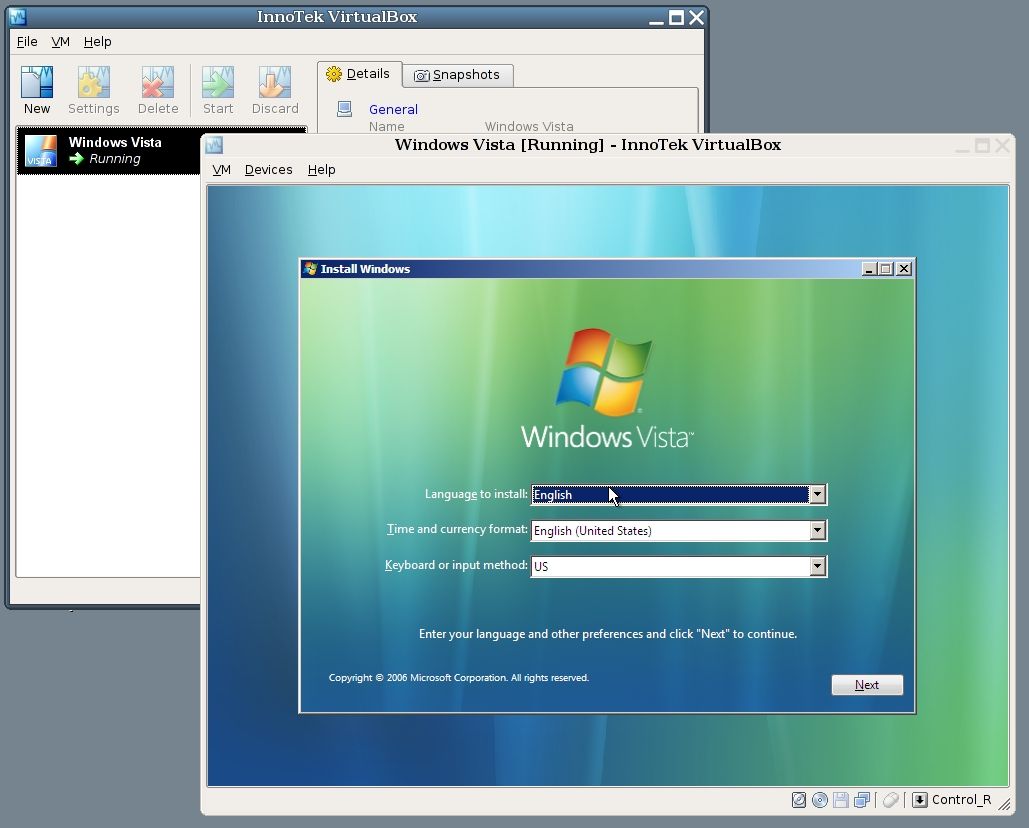


- #VIRTUAL WINDOWS 7 MACHINE INSTALL#
- #VIRTUAL WINDOWS 7 MACHINE UPDATE#
- #VIRTUAL WINDOWS 7 MACHINE PATCH#
She writes the Patch Watch column for, is a moderator on the listserve, and writes a column of Windows security tips for. Susan Bradley has been patching since before the Code Red/Nimda days and remembers exactly where she was when SQL slammer hit (trying to buy something on eBay and wondering why the Internet was so slow). Then plan on retiring these systems as soon as you can. If there is a need to keep an older operating system, do the best you can to isolate it from the rest of your production network. Ensure you manually scan for updates and review what optional updates you may not have installed in the past.Īll these steps won’t protect you from all unpatched vulnerabilities, so it’s crucial that you understand the risks you are taking by running unpatched software. Ensure all final updates are installed as Windows 7 starts its final days.Don’t open email on Windows 7 (and especially don’t follow HTML links).
#VIRTUAL WINDOWS 7 MACHINE UPDATE#
Ensure you update to the latest version of Office and don’t use older versions of Office.Review your Data Execution Prevention Protection settings and ensure they are enabled.If you have issues running a line-of-business application without administrator rights, use LUA Buglight to determine what registry keys or file locations need elevated rights. Don’t log into the system with administrator credentials and use only limited user rights.While it, too, is no longer supported, you can import the settings to protect popular software.
#VIRTUAL WINDOWS 7 MACHINE INSTALL#
Install Microsoft’s Enhanced Mitigation Experience Toolkit on Windows 7. You will need to license the machine using software assurance to transfer it to a virtual machine. Virtualize Windows 7 and narrow the scope of the use of the system so that it’s only used when absolutely necessary. Isolate the machine on a private network that isn’t able to access the internet. You can also use these settings via Group policy to block it for certain users. Then enter 127.0.0.1 into “Address of proxy” and 80 into the “Port” setting. Select ”Do not use proxy server for local (intranet) addresses”. Enable proxy settings and use the same proxy server for all addresses. Use the proxy trick from the XP era to keep older systems from the web. Block the machines from being able to browse the internet. What can you do to isolate these potentially vulnerable and risky Windows 7 systems so that they don’t introduce risk into your network? Plenty. In my case, we need it to run older versions of specialized software to prepare historical calculations.Ĭlearly, we do not want to expose our network and our systems to undue risk that Windows 7 presents. However, some might find neither option feasible or have a reason (as I do) to keep Windows 7 around to access older line-of-business applications. January 2020 will be the last time Windows 7 will receive a security update, although customers with a premier support contract can purchase Extended Security Updates (ESU) for Windows 7 Professional and Enterprise through January 2023.Īlternatively, when Windows Azure virtual desktop is released, you can purchase virtual desktop and ESU will be provided free of charge to allow you to transition to Windows 10. 
We’re coming up to the Windows 7 end of life date.







 0 kommentar(er)
0 kommentar(er)
